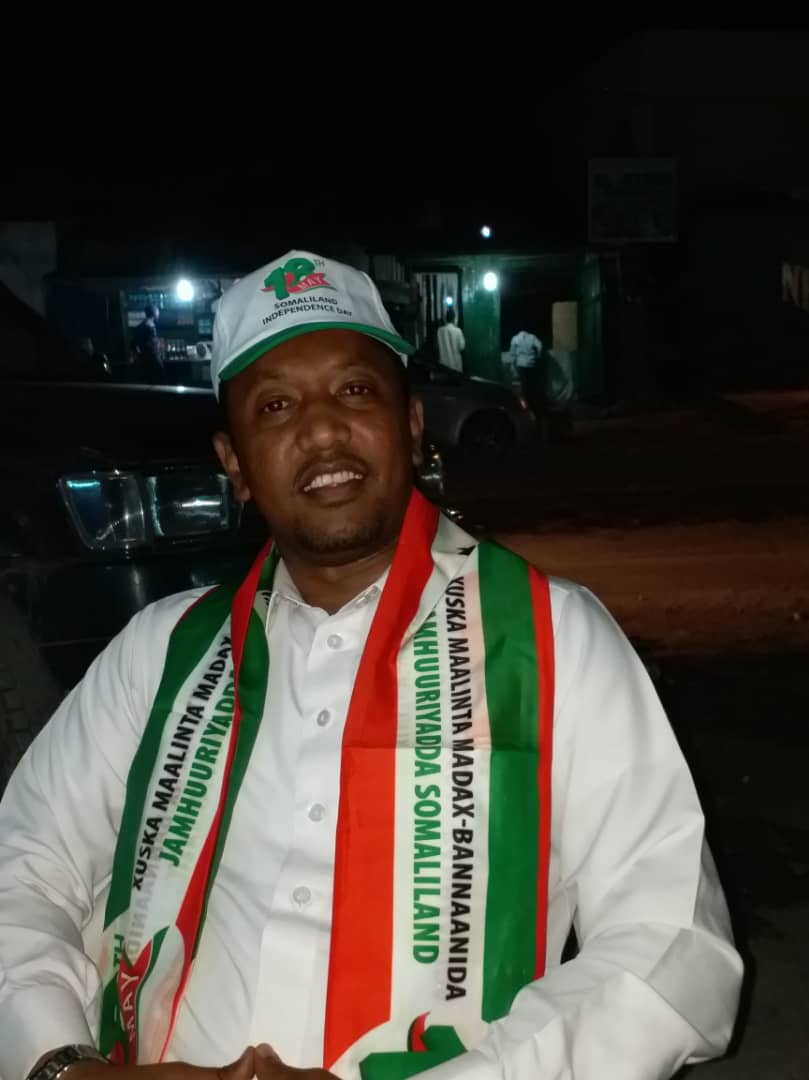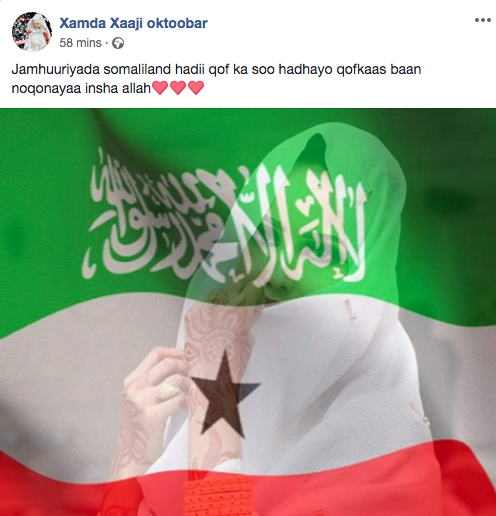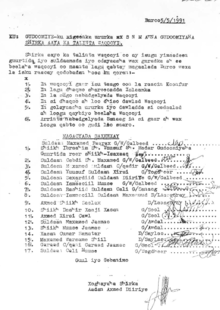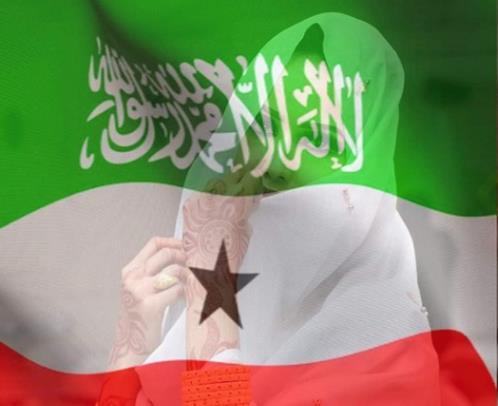
Somaliland in Festive Mood on 18 May Commemoration Eve
It is about 10:30 on 18 May eve - the evening before the restoration of independence declared in 1991 is to be commemorated.
The streets of Hargeisa are jammed. Floods of young people wearing the tri-colour standards of Somaliland are going either way in First and Second Avenue streets.
The mood is unmistakable. Almost everyone is talking about the next day. Many are speaking in awe of the stand from which the President will be acknowledging the passing hordes of marching men and women in uniform. The podium from which, come 18 May, he will be addressing the nation to reaffirm its unity, refresh their energy to insist on making the world realize that they are ready to go another 28 years if need be to reclaim the independence they lost to an ephemeral unity in 1960.
Cars on which the Somaliland standard is either draped over them or painted on them are moving slowly fender to bumper either way, too. The honking and the singing of young people packed into - and sometimes - every available space on the vehicles say it all.
Somalilanders, abroad, are also expressing their pride in the homeland eloquently - on every venue possible. 
It is 18 May.
The spirit of the event, and how Somalilanders feel about their reclaimed independence, was best expressed by Hamda Haji October on Facebook.
"If only one person is remain of Somaliland adherents, that is going to be me!" she said.
Survival
 Ali Mahdi - first President of Post Siyad Barre ‘Somalia' in Mogadishu
Ali Mahdi - first President of Post Siyad Barre ‘Somalia' in MogadishuThe unrecognized Republic of Somaliland survived a great number of attempts to derail it., starting with the dissent of the first President of Somaliland, the late Abdirahman Mohamoud Ali, who, right after he ceded defeat to the late Mohamed Haji Ibrahim Egal, in 1993, went over to Mogadishu. There he joined President Ali Mahdi Mohamed who - like his successors up to this day - was claiming that he was the President of a non-existent entity called ‘Somalia'. Ali Mahdi, at the time, as Farmajo 28 years later, hardly ruled sections of Mogadishu let alone the whole country.
Abdirahman later was later pardoned during the reign of President Dahir Rayale Kahin and his body flown back to Somaliland to be buried when he passed away. Some argue that he never publicly sought public forgiveness before his death.
Somaliland survived several short-lived civil wars: twice in 1992, and then a relatively longer one in 1994.
It survived the formation of Puntland in 1998 and thick propaganda barrages Garowe and Mogadishu trained on Somaliland unity and its sovereignty case. Areas the two cities primarily targeted, besides the reclamation of sovereignty, were the sanctity of pre-independence borders and the unity of clans who had, together, signed the proclamation of independence in the all-clan consultation conference of Burao in 1991. The Borama conferences of 1991 and 1997, later, reaffirmed the country's reaffirmation of principles agreed upon in 1991.
Somaliland weathered innumerable attempts on the part of successive administrations in Mogadishu to isolate Somaliland in the eyes of the international community - partly succeeding especially in respect to Somaliland attaining diplomatic recognition.
Today
The incumbent administration of Somalia and its President, Mohamed Abdullahi Mohamed ‘Farmajo', have achieved a degree of success on fragmenting Somaliland unity with programs that he and his Prime Minister, Hassan Ali Kheyrre, created and financed such as the Somali Society Integration (SSI). This program is designed in such a way that it simultaneously but separately targets segments of the society. Sub-programs within the larger one focus on youth, the media, women, traditional leaders, and - of late - ‘politicians'. A select number within these caucuses are given monthly stipends and ‘political funds' to successfully attract more and more numbers into thinking that slowly prepares them to deride the Somaliland case, calling it names, and labelling it as, for instance, ‘Somalo-phobia' and ‘paranoia'.
The SSI programs extensively use sponsored pages and created ‘influencers' on social media. These pages have reached a stage where thousands and thousands of comments bombard any move on the part of Somaliland authorities to safeguard the country's constitution crying ‘Free this!' or ‘Free that!' within seconds of, for instance, someone taken in by the police.
The young man shown above is one of many plants to start a ‘discussion' the bulk of which come from SSI moles and their adherents - knowingly or unknowingly. He was delivering an unmistakable message on the streets of Hargeisa three-four days earlier.
Immediately afterwards, Facebook exploded into a frenzy of SSI arguments. Many claimed that Somaliland colours and emblem could be worn in Mogadishu. But, then, those comments - the more reasonable among the contributors - were quickly corrected.
"Mogadishu wished to project Somaliland as one its states. Hence, permitting Somaliland colours as it permitted Puntland, Jubbaland and the rest of its states' colours".
Tomorrow
There are - simply - two tomorrows to tomorrow's tomorrow: (1) The 28th yearly message Somalilanders will once more send to a ‘double-standarded' world, and (2) a change on world attitude to Somaliland expected to materialize within the year - or latest early 2020.
The international community has had ample time to come of age to understand a reunion with Somalia would simply exhume the Greater Somalia dream which necessitated the 1960 Somaliland-Somalia union from the grave thus putting the future of Kenya, Ethiopia and Djibouti in jeopardy once more.
A brighter Somaliland future is inevitable. 





Legal Disclaimer:
MENAFN provides the
information “as is” without warranty of any kind. We do not accept
any responsibility or liability for the accuracy, content, images,
videos, licenses, completeness, legality, or reliability of the information
contained in this article. If you have any complaints or copyright
issues related to this article, kindly contact the provider above.

















Comments
No comment